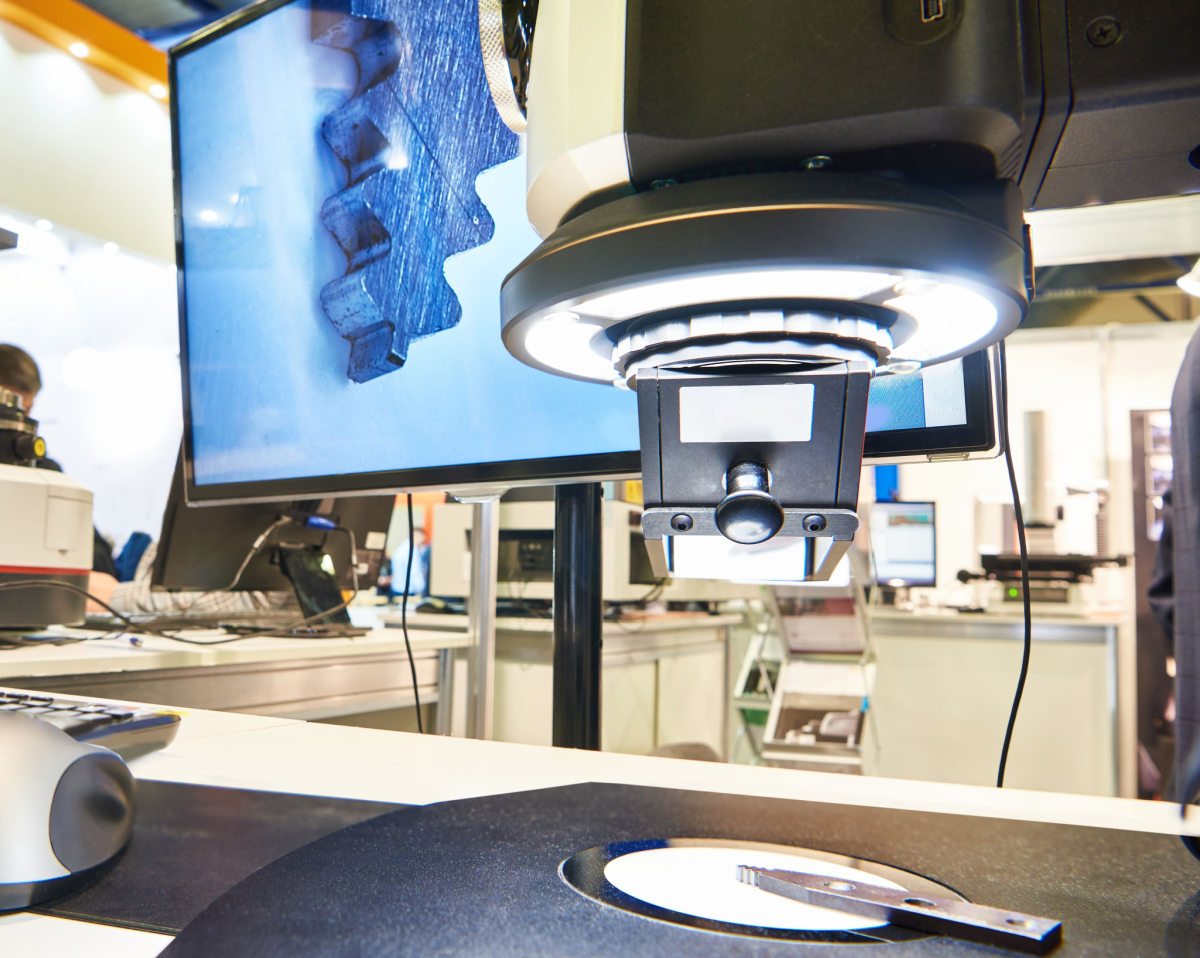Over the past several decades, microscopy has undergone numerous improvements that have transformed the processes related to manufacturing, inspection, and quality control. As microscopes have become more digitized, workers are able to complete tasks more efficiently with fewer mistakes and less risk of injury. Now, industrial manufacturing companies can use digital microscopy to enhance their analyses, measurements, documentation, and data sharing. With these benefits and more at the forefront, it’s no surprise that manufacturers are demanding even greater microscopy capabilities. The good news is that digital microscopes continue to evolve.
How It Started: Traditional Stereo Microscopes
Traditional optical microscopes were designed to allow users to magnify objects already visible to the naked eye to reveal more detail. This sophisticated piece of technology uses light and a system of lenses to magnify images. Users look through an eyepiece or two to view the object in question, but they can also take advantage of numerous other features, including selectable magnification, contrast modes, and LED illumination. These traditional microscope systems are excellent for various techniques, including brightfield, darkfield, polarization, fluorescence, and more.
Stereo microscopes were developed to add a sense of depth when viewing the sample. Using two optical paths – one for each eye – they exploit our natural stereoscopic vision, thereby generating a 3-dimensional view of the sample and revealing more detail with added shadows and contrast. This 3D view allows the user to use tools to work on the sample, hence the application and common name of “dissecting” microscopes.
Nowadays, users can purchase high-magnification, high-performance stereo microscopes, such as the LX Microscopes by UNITRON, that are available with ports for digital cameras to make inspections more ergonomically friendly. Many manufacturing environments require technicians to spend continuous hours looking through the eyepiece of a microscope, ensuring the perfection of products. For this reason, ergonomically-correct setups are key to preventing musculoskeletal strains and the subsequent loss in production, employee turnover, and high insurance costs.
While companies could provide operators with a range of microscope ergonomic accessories, like a digital camera — and this is a very viable option — investing in digital industrial microscopes may be a better solution.
The Power of the Digital Image: Digital Microscopes
One of the greatest advancements in the field of microscopy was when the microscope went fully digital. With a fully digital inspection microscope like the Inspex 3 or Omni 3, there is no eyepiece to use to inspect a product, nor is a PC required. The microscope uses built-in software, and its camera captures an image and displays it on a monitor. All camera controls and analysis tools are also displayed on the monitor. This system for viewing samples allows operators to enjoy excellent ergonomics, share microscopy images with multiple users, and rapidly identify defects. The embedded software allows for easy camera control, image labeling, annotation and measurement (may require an additional app), and even fast pass/fail analysis using a graphic overlay. Reports can be created with only a few clicks.
When shopping for digital microscopes, manufacturing companies should invest in systems with high-resolution cameras, moveable heads, and high dynamic range (HDR) functionalities. These features ensure inspection technicians and quality control experts can enjoy a dynamic, high-quality viewing of the objects in question.
A Glimpse Into the [Near] Future: AI Microscopes
With the latest advancements in digital inspection, it may seem like it can’t get any better. However, a new age in microscopy is rapidly approaching. The power of artificial intelligence (AI) is making its way into the field of inspection. With an AI-powered microscope, operators will be able to automatically detect and classify a range of product defects, increasing productivity, eliminating human error, and improving production throughput. AI inspection systems may also integrate with robotics, conveyors, and product handling systems to operate around the clock, vastly increasing throughput and reducing the cost of overhead. Perhaps with the Acumen AI by ASH Technologies, the future is already here.
Ready to Experience the Future of Inspection?
Both traditional and digital microscopes have key roles in the production of devices across a range of industries. The type of microscope you choose will depend on application and other factors, including the need to document and report the sample, how long the microscope will be in use during a day, and by whom (one or more workers). Whether you know what you need or require assistance, UNITRON can equip you with high-quality inspection microscopes that suit your application. Contact us today to find the best stereo or digital microscope for you.
Are you interested in learning more about inspection microscopes? Join us in Booth #135352 (Quality Pavilion, East Building, Level 3) at The International Manufacturing Technology Show (IMTS 2022) on September 12-17, 2022. We’ll have a variety of microscopes for demonstration and for you to compare.



